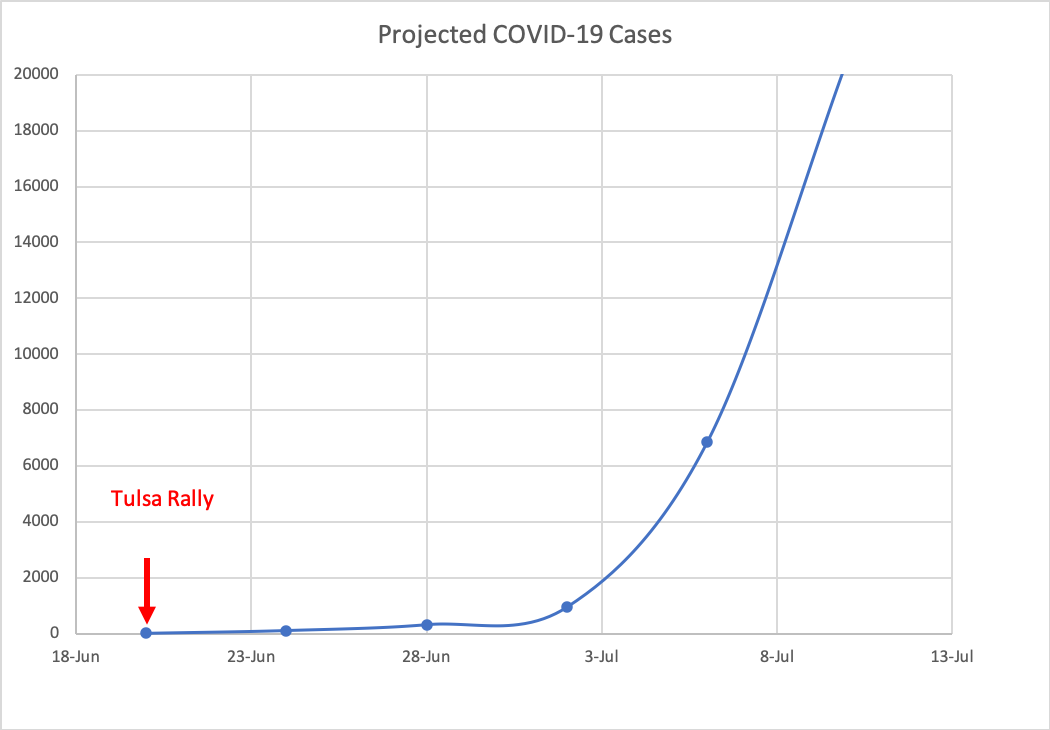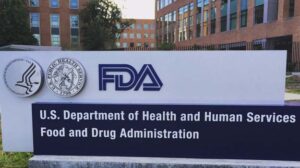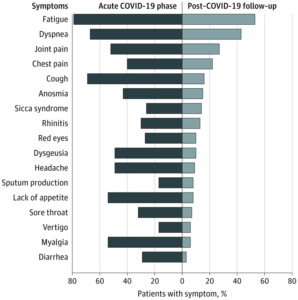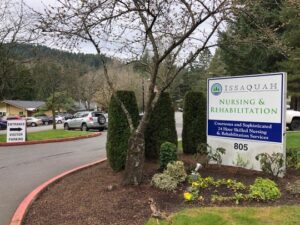COVID-19 continues to surprise and confound, but, over the course of the pandemic, epidemiologists have come to a consensus on several facts about the spread of the virus.
- The virus can and does spread through the air when people sing, yell, or talk loudly.
- Exposure to the virus increases sharply with proximity to someone releasing the virus.
- The risk of transmitting the disease rises steadily with duration of exposure.
- Masks dramatically reduce the risk of transmission.
- People who are infected can spread the virus before they have symptoms.
- The virus spreads more easily indoors than out.
In light of all this, packing thousands of people together in an arena (or even a church) in a city where COVID-19 cases are spiking to yell, chant, and cheer for a couple of hours with no masks on might seem like a bad idea. A really, really bad idea.
To see how bad an idea, let’s do the math.
Suppose you held a rally in a state where the disease is spiking. Let’s say, just for example, Oklahoma. It’s hard to say exactly how many people are infected in a crowd, but let’s say you held it on a day when there were 500 new cases. We know that every detected case represents somewhere between two and ten actual cases. To be conservative we’ll go with two. We also know that people stay infectious for about 3 days without symptoms. So, let’s assume there were 3000 people in Oklahoma capable of spreading the disease. That translates to a rate of 0.075% of Oklahomans. Many attendees at the Trump rally came from out of state, so that rate is a rough guess. It is also likely that those attending the rally had a higher rate of infections than average, given their willingness to engage in the high-risk behavior of attending and not wearing face coverings. It seems conservative to assume that there were at least five infected people in the audience.
A crowd of screaming, unmasked people creates the perfect setting for a so-called super-spreader event. The classic example of this is the Washington State Choir rehearsal in which one person infected 52 out of 60 attendees in the course of two hours. In light of those numbers, it seems reasonable to suggest that each infectious person at a rally might infect 20 others. That gives us 100 cases leaving the rally and spreading across the country.
In a couple of days, each of these 100 cases are likely to cause three new cases, spreading at a rate consistent with the baseline rate of disease spread, R0, the reproduction number. They will reproduce again in a time period known as the serial interval, the time from one round of infection to the next. The serial interval for COVID-19 is about 4 days. That means that, in just over a week, we will have 900 cases. Just in time for the 4th of July.
All the crowds and picnics will certainly provide the opportunity for some super-spreading events. If a quarter of the cases are involved in super-spreading events, those 900 cases will become than 6,500 in the course of 4th of July festivities. Another round of spreading pushes us over 20,000 by mid-July. When deaths begin to occur, 3-4 weeks after the rise in cases, we can expect over 100 deaths related to that one rally.
But one rally in a state experiencing an explosive growth in cases was not enough. The rally in Arizona was smaller, but the state has almost twice the COVID-19 incidence rate of Oklahoma, which means almost as many cases can be expected from the smaller rally, pushing us to a total of almost 40,000 estimated cases and 200 deaths.
The Trump Campaign website now states that the seemingly endless list of rallies planned for his campaign is now being converted to virtual rallies. It is not clear exactly what motivated this change of tack, but the motivation for their insistence on these two rallies is disturbing. I rarely speak with certainty about the opinions of others, but I will guarantee that no public health scientist in the entire federal government thought these rallies were a good idea. In other words, Trump either didn’t communicate with the experts available to him or ignored them in insisting on a rally. And remember, he thought a million people would be there. A packed arena would have generated three times as many cases and that doesn’t begin to consider the cases arising from the hundreds of thousands he hoped and expected would greet him outside the arena.
So, why? The most generous interpretation is that Trump did this to help his reelection campaign. That means that those who attended the Tulsa rally ( along with their friends and family wherever they came from) will be dying to see him re-elected. Literally. And Trump, through a perverse bioterrorism of ignorance and denial, is willing to let them die.
The lesson? Never, ever, try to gaslight a virus.




One THOUGHTS ON “People are Dying to Re-elect Trump: Is He Killing Them?”
Comments are closed